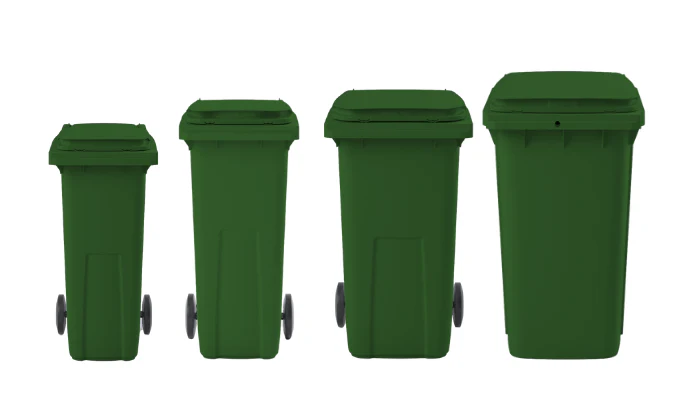Urban living and modern business environments frequently present space constraints that challenge traditional waste management approaches. Standard large-capacity containers often prove impractical in apartment buildings, narrow alleyways, small retail spaces, or densely packed commercial areas. The challenge lies in maintaining adequate waste storage capacity while accommodating physical space limitations and accessibility requirements. Smart waste management solutions require careful balance between functionality and spatial efficiency. A compact 120 litre bin offers the ideal compromise, delivering professional-grade waste storage capability while fitting seamlessly into space-constrained environments where larger alternatives would prove impractical or impossible.
Space Optimization Engineering
Compact 120-litre designs utilize advanced engineering principles to maximize internal volume while minimizing external footprint dimensions. Vertical optimization techniques create containers that achieve full capacity within reduced floor space requirements, typically measuring 450mm width compared to 550mm for standard models. This 100mm reduction proves significant in narrow hallways, small patios, or crowded storage areas.
Corner radius optimization and wall angle adjustments contribute to space efficiency without compromising structural integrity. Many compact designs incorporate tapered profiles that facilitate storage in triangular or irregular spaces commonly found in urban environments. These design modifications maintain full capacity while improving spatial compatibility.
Maneuverability Advantages
Reduced dimensional profiles significantly improve maneuverability in constrained spaces, allowing easier navigation through doorways, around obstacles, and within tight storage areas. The compact footprint reduces the turning radius required for positioning and repositioning, particularly important in environments with multiple containers or limited maneuvering space.
Wheel configuration optimization for compact bins often includes smaller-diameter wheels with precision bearings that maintain smooth operation while reducing overall height. This wheel design approach ensures reliable mobility while accommodating low-clearance storage areas such as under-stair spaces or basement storage rooms.
Urban Environment Integration
Dense urban environments present unique challenges including limited sidewalk space, narrow service alleys, and restricted access points for collection vehicles. Compact 120-litre bins navigate these constraints more effectively than larger alternatives, ensuring reliable collection access while minimizing disruption to pedestrian traffic or neighboring properties.
Aesthetic integration becomes more manageable with compact designs that blend seamlessly into urban landscapes without creating visual clutter or obstruction. The reduced profile minimizes visual impact while maintaining professional appearance standards required in commercial districts or upscale residential areas.
Multi-Unit Applications
Apartment buildings, condominiums, and commercial complexes often require multiple waste collection points to serve different areas or segregate waste streams. Compact bins enable efficient deployment of multiple units without overwhelming available storage space or creating accessibility issues for residents or service personnel.
Standardized compact sizing facilitates systematic deployment across multiple locations, ensuring consistent capacity while maintaining uniform appearance and operational procedures. This standardization simplifies maintenance, replacement, and operational training requirements across complex multi-unit installations.
Collection Efficiency Benefits
Collection personnel benefit from improved handling characteristics of compact containers, which require less physical effort for positioning and maneuvering during service cycles. The reduced size allows for easier lifting and handling when manual collection becomes necessary in areas inaccessible to automated systems.
Vehicle accessibility improves in tight spaces where standard collection trucks must navigate carefully around parked cars, narrow driveways, or restricted turning areas. Compact containers can be positioned more flexibly to accommodate collection vehicle limitations while maintaining efficient service delivery.
Storage Flexibility Solutions
Indoor storage applications benefit significantly from compact sizing, as containers can be stored in utility rooms, basements, or garage areas without overwhelming available space. This indoor storage capability protects containers from weather damage while maintaining security and aesthetic standards.
Seasonal storage requirements become more manageable with compact containers that stack efficiently or fit into storage areas typically too small for standard-sized alternatives. This storage flexibility proves particularly valuable for seasonal businesses or facilities with varying waste generation patterns.
Cost-Effectiveness Considerations
Compact designs often utilize less raw material while maintaining structural integrity through optimized engineering, potentially reducing initial purchase costs compared to oversized alternatives. The space savings may eliminate the need for dedicated storage facilities or expanded storage areas, providing indirect cost benefits.
Maintenance costs typically remain lower for compact containers due to reduced material stress and simplified replacement procedures. The manageable size facilitates easier handling during cleaning and maintenance activities, reducing labor requirements and extending service life through improved care.









